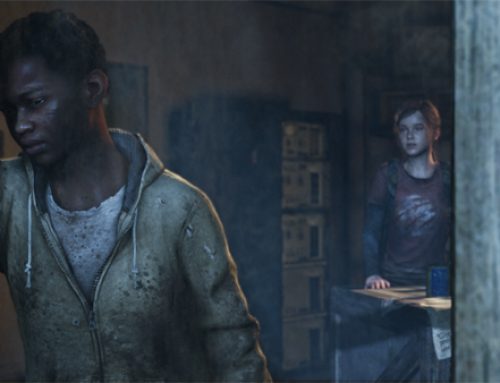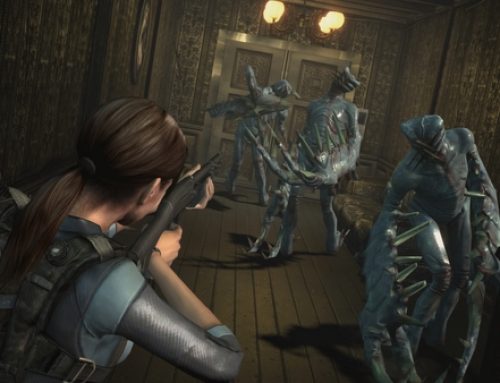
Queasy Games' "Sound Shapes" features levels designed around music by Beck and Deadmau5, among others.
Something unexpected happened over the summer: I fell in love with a handheld gaming device. Sony’s overpriced, still-far-from-perfect PlayStation Vita wormed its way into my heart during a cross-country road trip in early July and is firmly entrenched. For the first time in my life, I’m choosing to game on a handheld at home, when I could be playing on my PC or consoles.
With a slowly expanding list of quality exclusives, plus a growing library of PlayStation Portable-era legacy titles, the Vita feels like it’s hitting its stride, even if sales of the spendy handheld aren’t where Sony would like them to be.
Here’s a quick recap of games I’ve been playing.
“Persona 3 Portable” (rated M, $20 download for PSP or Vita): With a full Vita remake of cult favorite role-playing game “Persona 4” due out later this year, “Persona 3 Portable” offers a great taste of what the series is all about. You control a band of Japanese high school students who shoot themselves in the head with gun-shaped “evokers” to summon supernatural beings called “personas.” By day, you go to high school and build up your relationships with your classmates and a handful of adults. By night, you travel to a massive tower called Tarturus and use your characters’ personas to do battle against all manner of monsters known as “shadows.” “P3P” is a great change of pace for fans of Japanese-style role-playing games with turn-based fighting. And it’s LONG. I’m 70+ hours in and still not close to finished.
“Sound Shapes” (rated E, $15 download for Vita, also available on PS3): This two-dimensional, platform-jumping game from Queasy Games pairs music from the likes of Beck, Deadmau5 and Jim Guthrie with clever, colorful levels designed by Superbrothers and Pyramid Attack. The Pyramid Attack-Beck collaboration (above), which has players jumping on platforms whose surface changes with Beck’s lyrics, is particularly inspired. This bite-sized game, which lets players create their own levels using the Vita’s touch pads, seems tailored for future musician-game designer collaborations. Spend an hour with it, and you’ll have your own short list of artists you’d like to see in “Sound Shapes.” (How about some Daft Punk, Seefeel, Avalanches, Madlib or Mouse on Mars?)
“Gravity Rush” (rated T, $40): The arty, three-dimensional action game from the Japanese developer of the original “Silent Hill” stars a girl named Kat who has the ability to manipulate her own gravity field. This limited superpower gives Kat the ability to briefly float or walk on ceilings. As you traverse the game’s open city and complete missions, you’ll unlock upgrades, such as the ability to allow Kat to use her power for more time before she falls to the ground. “Gravity Rush’s” core gameplay concepts could work on the PS3, but the way the game uses the Vita’s tilt sensor adds just a tiny bit more immersion. The combat, in which you can send Kat tumbling through the air, then crashing back to earth to deliver a devastating kick, is exhilarating.
“Growlanser: Wayfarer of Time” (rated T, $40 for PSP, though download also works on Vita): This new role-playing game from Atlus, publishers of the “Persona” series, perfectly illustrates one of the Vita’s most frustrating flaws. “Wayfarer of Time” is a PlayStation Portable game. You can’t buy it or download it from the Vita’s version of the PlayStation Store. But you can buy it on your PS3 and transfer it to your Vita using a USB cable. And the game works fine. This is the case with dozens, if not hundreds of PlayStation Portable and original PlayStation legacy titles. The “official” list of older games that play just fine on Vita is much shorter than the list of actual games that work, requiring those of us wanting to play legacy titles to hit Google and gaming forums before we buy. It’s the gaming equivalent of learning about new music from listservs and Internet bulletin boards, something I stopped doing around 1997.
Despite the Vita’s shortcomings, if Sony called and asked me to return my Vita review unit, I’d happily negotiate a purchase or buy my own. I’d curse under my breath about the overpriced, proprietary memory units that retail for quadruple the price of SD cards that are standard in smart phones and other devices, but the solidly built handheld with the large touchscreen has become an integral part of my gaming routine in the way similar devices have not. While the Vita might not hold as much appeal to gamers who have thoroughly explored the PSP library, its additional heft and larger screen size than its predecessor make it a great way to explore Sony’s handheld offerings, new and old.
Follow Eric on Twitter or join the “GameWit blog” group on Facebook.



